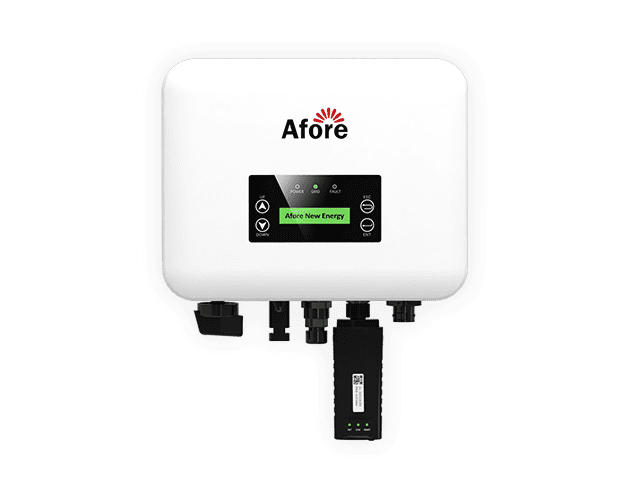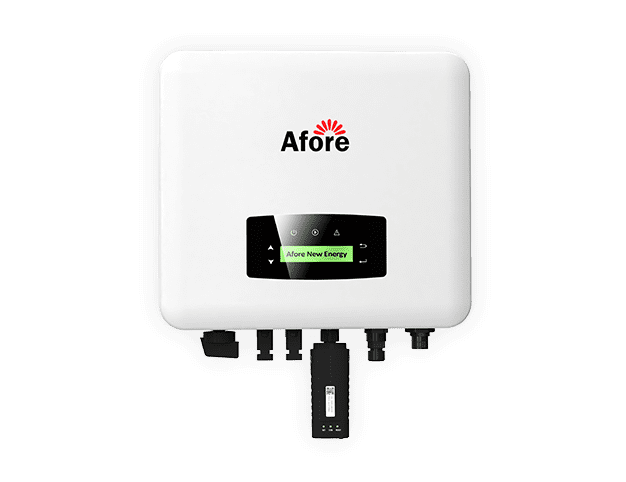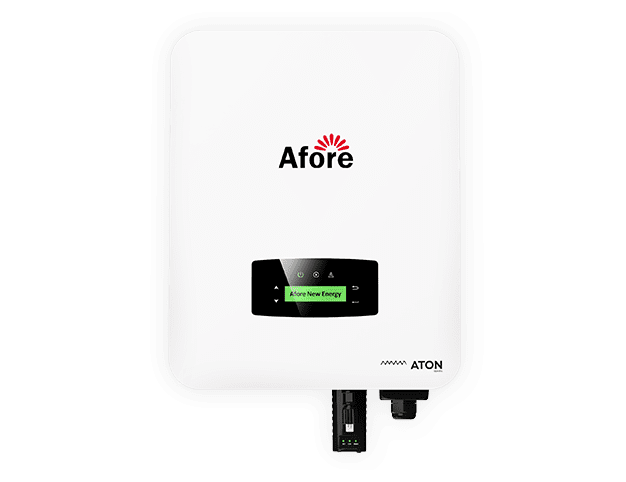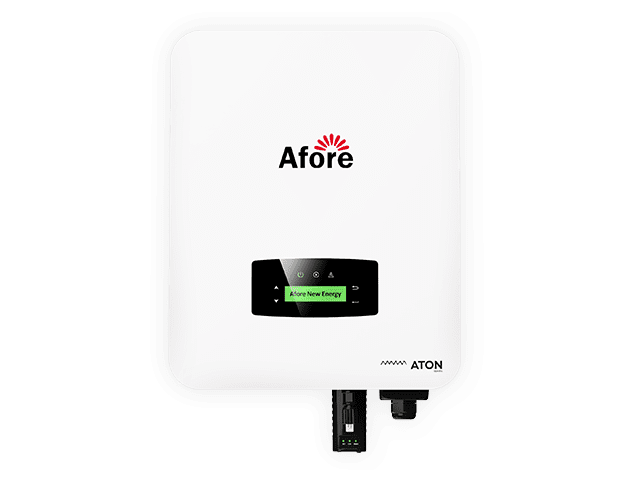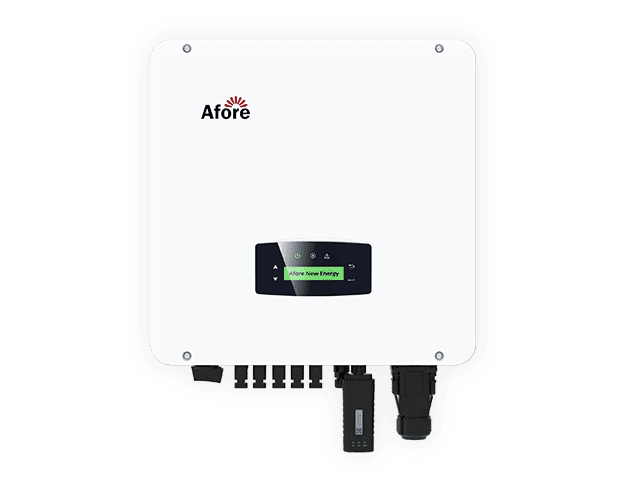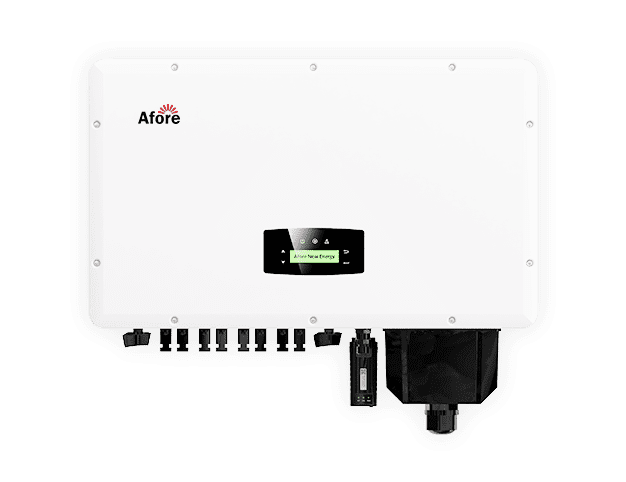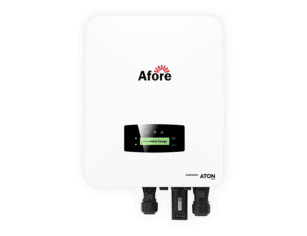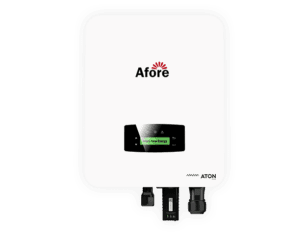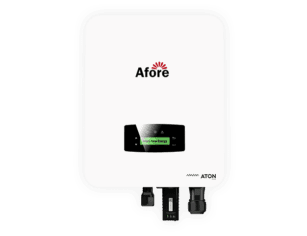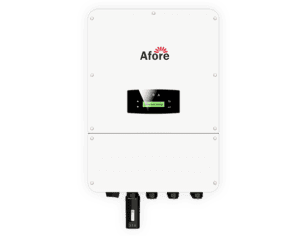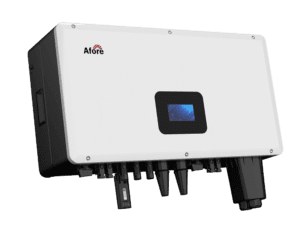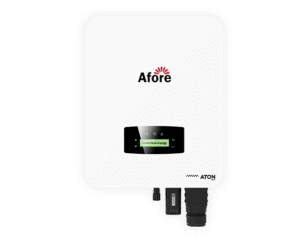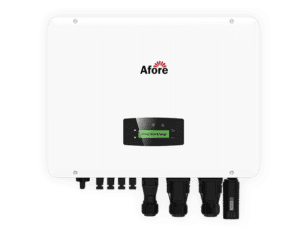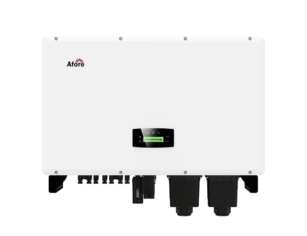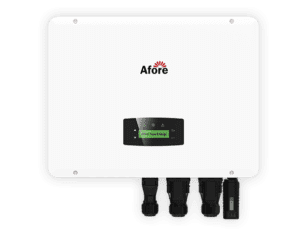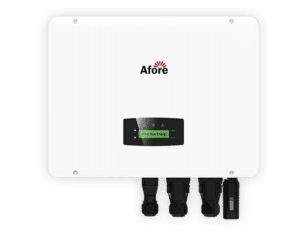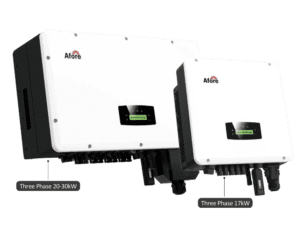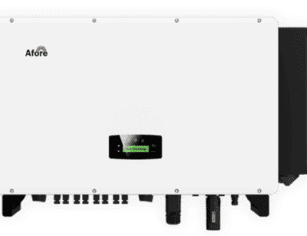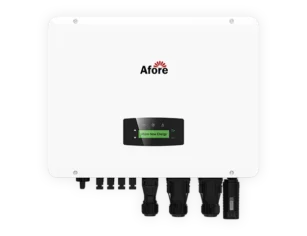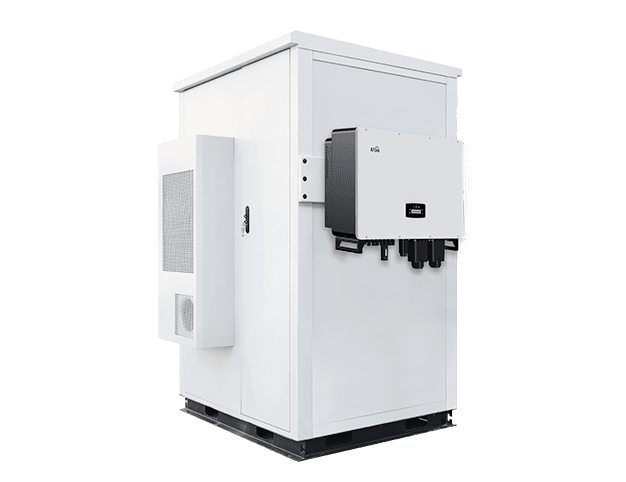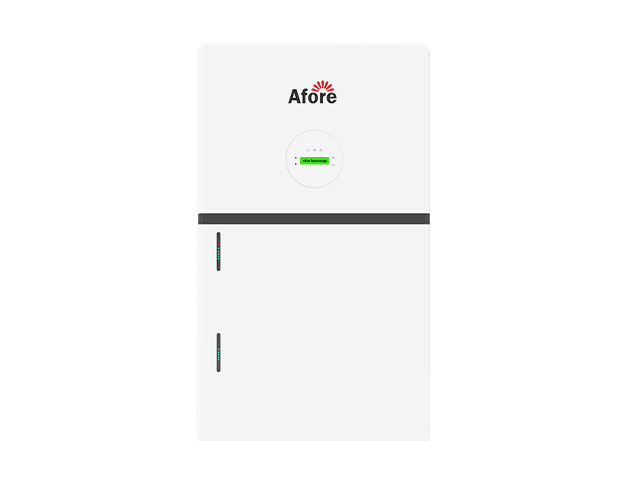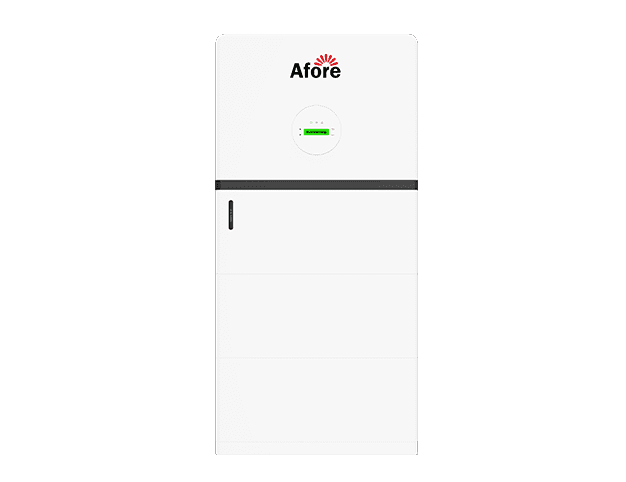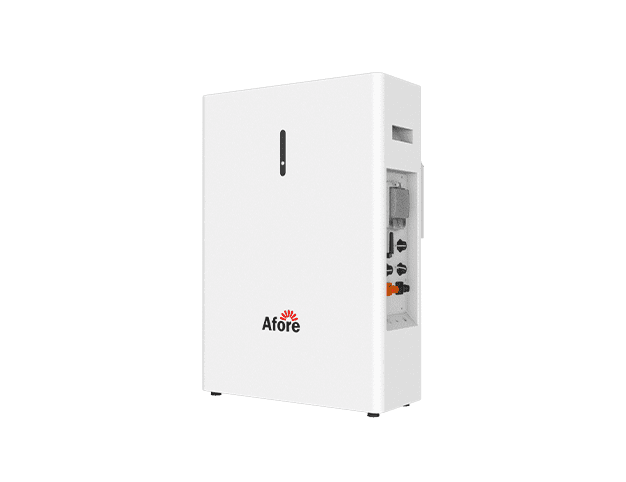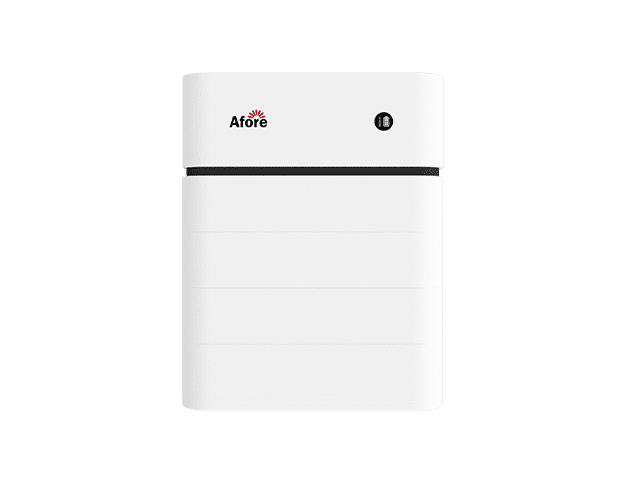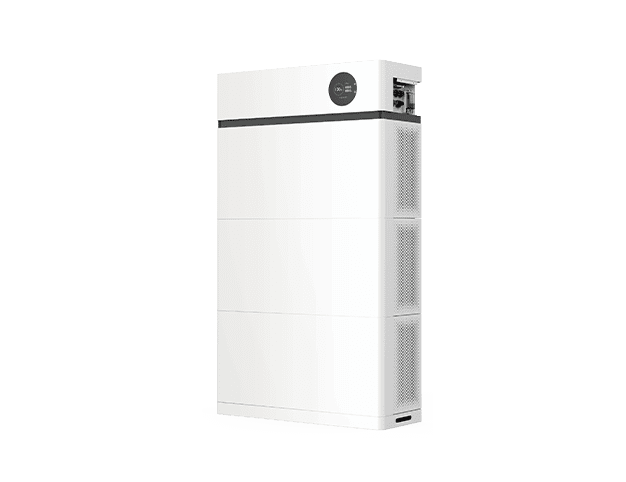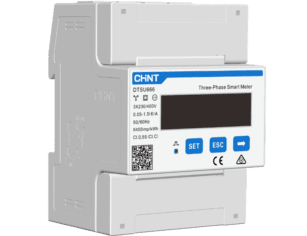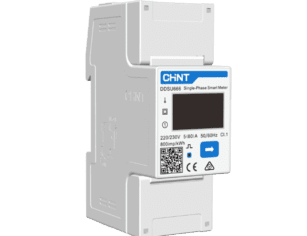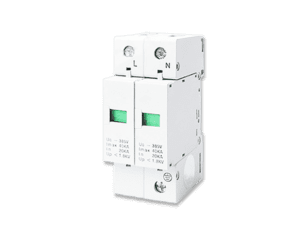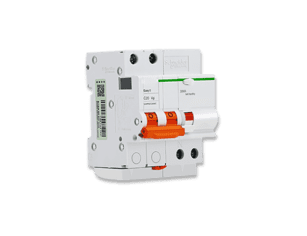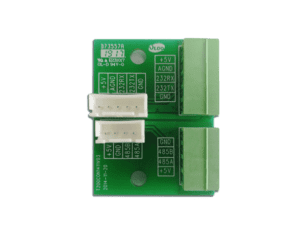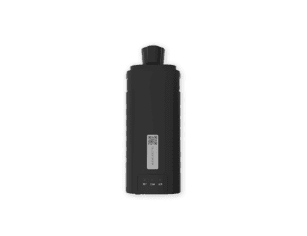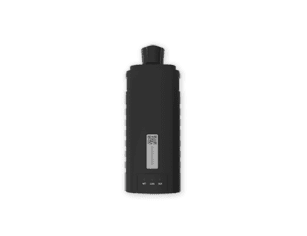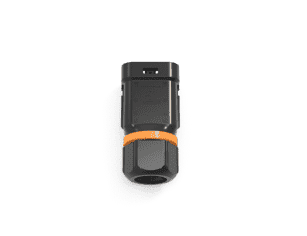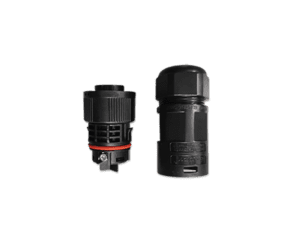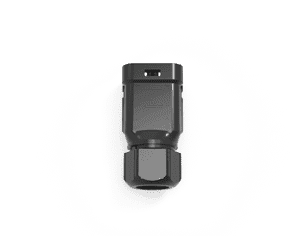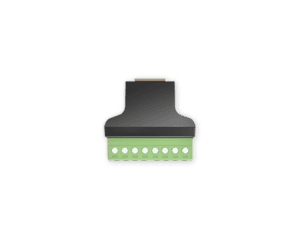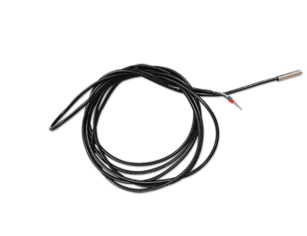Der ultimative Leitfaden für die Auswahl und Verwendung eines 5000-W-Inverters für Ihr Haus oder Wohnmobil
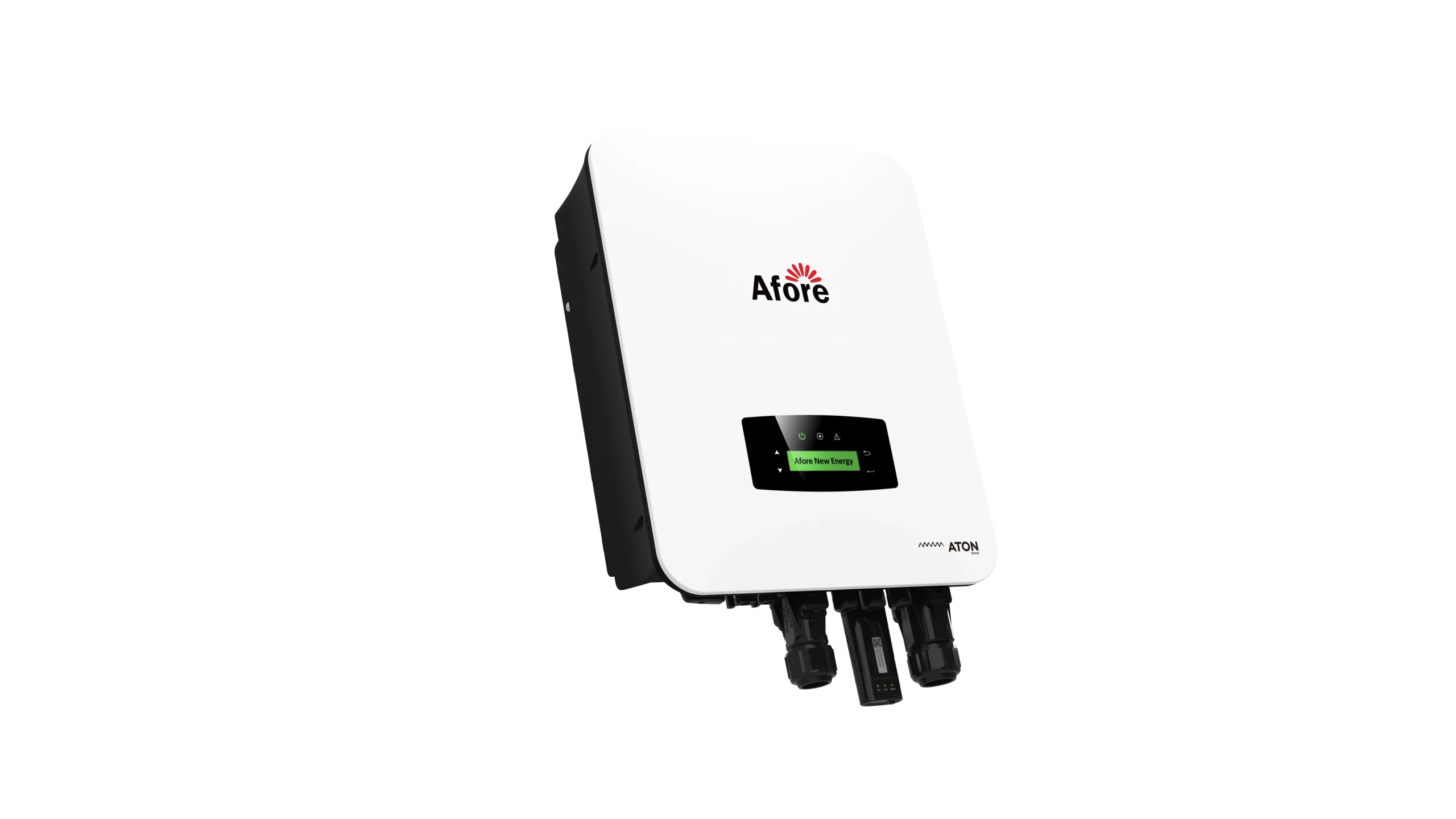
Inhaltsübersicht
Egal, ob Sie sich vom Stromnetz abkoppeln, Ihr Wohnmobil für eine Reise quer durchs Land vorbereiten oder einfach nur sicherstellen wollen, dass Ihr Haus während eines Stromausfalls mit Strom versorgt bleibt - ein 5000-Watt-Wechselrichter könnte genau das Richtige für Sie sein. Aber woher wissen Sie, ob ein 5000-Watt-Wechselrichter das Richtige für Sie ist? Welche Geräte kann er bedienen? Wie viele Batterien werden Sie benötigen? In diesem umfassenden Leitfaden gehen wir der Sache auf den Grund.
Was ist ein 5000W Wechselrichter und wie funktioniert er?
Die Grundlagen eines 5000W-Wechselrichters verstehen
Ein 5000-W-Wechselrichter ist ein elektrisches Gerät, das Gleichstrom (DC) aus einer Batterie oder einer Solaranlage in Wechselstrom (AC) umwandelt, der von den meisten Haushaltsgeräten verwendet wird. Er fungiert als Brücke zwischen Ihren netzunabhängigen oder Notstromquellen und Ihrer alltäglichen Elektronik. Egal, ob Sie Ihren Kühlschrank, die Beleuchtung oder sogar eine kleine Klimaanlage mit Strom versorgen, dieser Wechselrichter liefert eine starke Dauerleistung von 5000 Watt und ist damit ideal für den Einsatz in Wohnhäusern und Wohnmobilen.
Der Begriff 5000-Watt-Wechselrichter bezieht sich einfach auf die maximale Ausgangsleistung, die er kontinuierlich liefern kann. Viele 5000-Watt-Wechselrichter verfügen auch über eine Spitzenleistung - in der Regel bis zu 10000 Watt -, um Anlauflasten von Geräten wie Motoren oder Kompressoren zu bewältigen.
Schlüsselkomponenten und Funktionalität
Ein typischer 5000-W-Wechselrichter umfasst die folgenden Hauptkomponenten:
- DC-Eingangsklemmen: Diese werden an Ihre Batteriebank oder Ihren Solarladeregler angeschlossen.
- AC-Ausgangsanschlüsse: Wo Ihre Geräte angeschlossen werden.
- Kühlsystem: Entweder lüftergestützt oder passiv, um Überhitzung zu vermeiden.
- Interne Schaltkreise: Einschließlich Transformatoren und Steuerplatinen, die die Spannung und Ausgangsfrequenz regeln.
Der Wechselrichter überwacht den eingehenden Gleichstrom, wandelt ihn mit Hilfe elektronischer Schaltungen in Wechselstrom um und sorgt für eine stabile und gleichmäßige Leistung. Hochwertige Modelle, insbesondere reine Sinus-Wechselrichter, liefern sauberen Strom, der für empfindliche Elektronik sicher ist.
Rolle bei Solarsystemen und netzunabhängiger Stromversorgung
In einer Solarenergieanlage spielt ein 5000-W-Solarwechselrichter - oft auch als Solar- und Leistungswechselrichter bezeichnet - eine entscheidende Rolle. Er wandelt die von den Solarmodulen gesammelte Energie (Gleichstrom) in nutzbaren Wechselstrom für Ihr Haus oder Wohnmobil um. Wenn er mit einer PV-Solarwechselrichterkonfiguration kombiniert wird, ist er Teil eines integrierten Systems, das Solarmodule, Laderegler und Lithiumbatterien umfasst.
Dies macht den 5000-W-Wechselrichter zu einer wesentlichen Komponente in Systemen für erneuerbare Energien, die sauberen, nachhaltigen Strom liefern und die Abhängigkeit vom traditionellen Stromnetz verringern. Auch in mobilen Anwendungen wie Wohnmobilen und Booten, wo kein Netzanschluss verfügbar ist, wird er sehr geschätzt.
Warum einen 5000W-Wechselrichter wählen?
Der 5000-Watt-Wechselrichter gilt als "Sweet Spot" in Bezug auf Leistung und Preis. Er ist leistungsstark genug, um die meisten Haushaltsgeräte gleichzeitig zu betreiben, und dennoch kompakt und erschwinglich genug für DIY-Solaranlagen oder mobile Stromversorgungssysteme. Im Vergleich zu kleineren Wechselrichtern bietet er Ihnen mehr Freiheit und Flexibilität und ist gleichzeitig erschwinglicher als schwere kommerzielle Geräte.
Kurz gesagt, ein 5000-Watt-Wechselrichter ist perfekt für Hausbesitzer, Van-Lifer, Prepper und jeden, der die Kontrolle über seinen Energiebedarf übernehmen möchte.
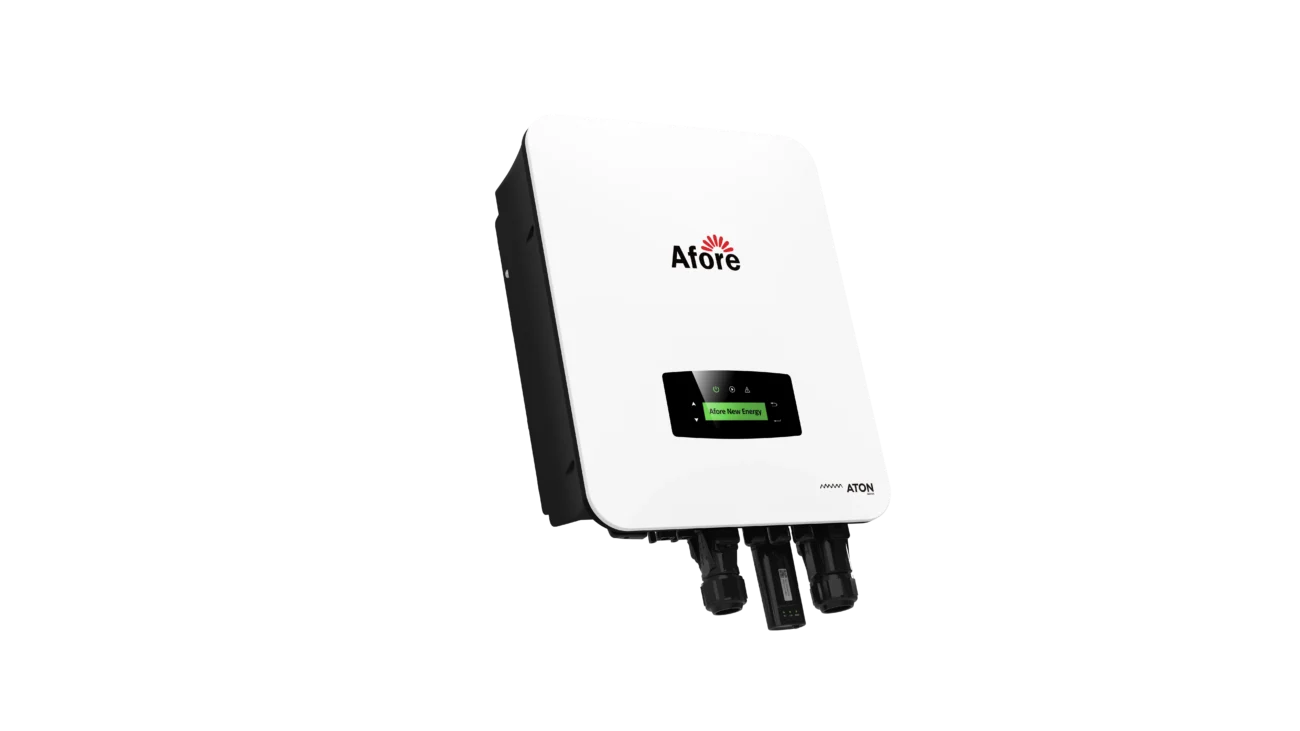
Wie wählt man einen 5000W Wechselrichter?
Bei der Wahl des richtigen 5000-Watt-Wechselrichters geht es nicht nur um die Wattleistung, sondern auch darum, den Wechselrichter auf Ihren Energiebedarf, Ihren Lebensstil und Ihre langfristigen Ziele abzustimmen. Hier erfahren Sie, was Sie vor dem Kauf beachten müssen:
Bestimmen Sie Ihren Energiebedarf
Listen Sie zunächst alle Geräte oder Werkzeuge auf, die Sie betreiben wollen. Addieren Sie deren Wattleistung und prüfen Sie den Spitzenstrombedarf (Spitzenleistung). Ein 5000-Watt-Wechselrichter kann je nach Modell Dauerlasten bis zu 5000 W und Spitzenlasten bis zu 10.000 W bewältigen.
Wenn Sie einen 5000-Watt-Auto-Wechselrichter in einem Wohnmobil oder Arbeitswagen verwenden, sollten Sie die Einschaltspitzen von Geräten wie Kühlschränken oder Luftkompressoren nicht vergessen.
Wählen Sie zwischen reiner Sinuswelle und modifizierter Sinuswelle
Reine Sinus-Wechselrichter erzeugen sauberen Strom, der das Netz nachahmt, und sind daher ideal für empfindliche Elektronik, Laptops und moderne Geräte. Modifizierte Sinus-Wechselrichter sind billiger, können aber bei einigen Geräten Brummen, Überhitzung oder Ineffizienz verursachen.
Für ein zuverlässiges Solar- und Wechselrichter-Setup sollten Sie sich immer für einen reinen Sinus-Wechselrichter entscheiden.
Spannungs-Kompatibilität
Prüfen Sie die Spannung Ihrer Batteriebank: Die meisten 5000-Watt-Wechselrichter arbeiten mit 24- oder 48-Volt-Systemen. Stellen Sie sicher, dass Ihr Wechselrichter mit der Spannung Ihres Systems übereinstimmt, um Überlastungen oder Umwandlungsprobleme zu vermeiden.
Wenn Sie mit 110-V-Geräten arbeiten, suchen Sie gezielt nach einem Modell, das die Anzahl der Lithiumbatterien unterstützt, die einen 5-kW-110-V-Wechselrichter versorgen können, um optimale Kompatibilität zu gewährleisten.
Merkmale des Wechselrichters berücksichtigen
Achten Sie auf zusätzliche Funktionen wie z. B.:
- Fernüberwachung
- LCD-Anzeigen
- USB-Ladeanschlüsse
- MPPT-Solarladeregler (für Wechselrichter-PV-Solarsysteme)
- Überlast- und Kurzschlussschutz
Diese Funktionen erleichtern den täglichen Betrieb und schützen Ihre Investition auf lange Sicht.
Zertifizierungen und Garantien prüfen
Ein guter 5000-Watt-Wechselrichter sollte UL-zertifiziert (oder gleichwertig) sein, über eine solide Garantie verfügen (idealerweise 3-5 Jahre) und von einer renommierten Marke unterstützt werden. Ganz gleich, ob es sich um einen Solarwechselrichter für Ihr Haus oder einen 5000-Watt-Auto-Wechselrichter für Ihr Fahrzeug handelt, die Garantie ist wichtig, wenn es um Ihren Seelenfrieden geht.
Budget und langfristiger Wert
Die Preise von Wechselrichtern variieren je nach Qualität und Ausstattung. Denken Sie langfristig, anstatt sich nur für die billigste Option zu entscheiden.
Wählen Sie verlässliche Marken und Hersteller
Wählen Sie immer Komponenten von vertrauenswürdigen Marken, um Haltbarkeit, Sicherheit und Kompatibilität in Ihrer Solaranlage zu gewährleisten. Wenn Sie einen Hersteller mit einer nachgewiesenen Erfolgsbilanz in der Solarwechselrichtertechnologie suchen, VorDie fortschrittlichen Fertigungsmöglichkeiten, die automatisierten Produktionslinien und die international zertifizierten Erkenntnisse machen das Unternehmen zu einer guten Wahl bei der Auswahl eines Qualitätswechselrichters.
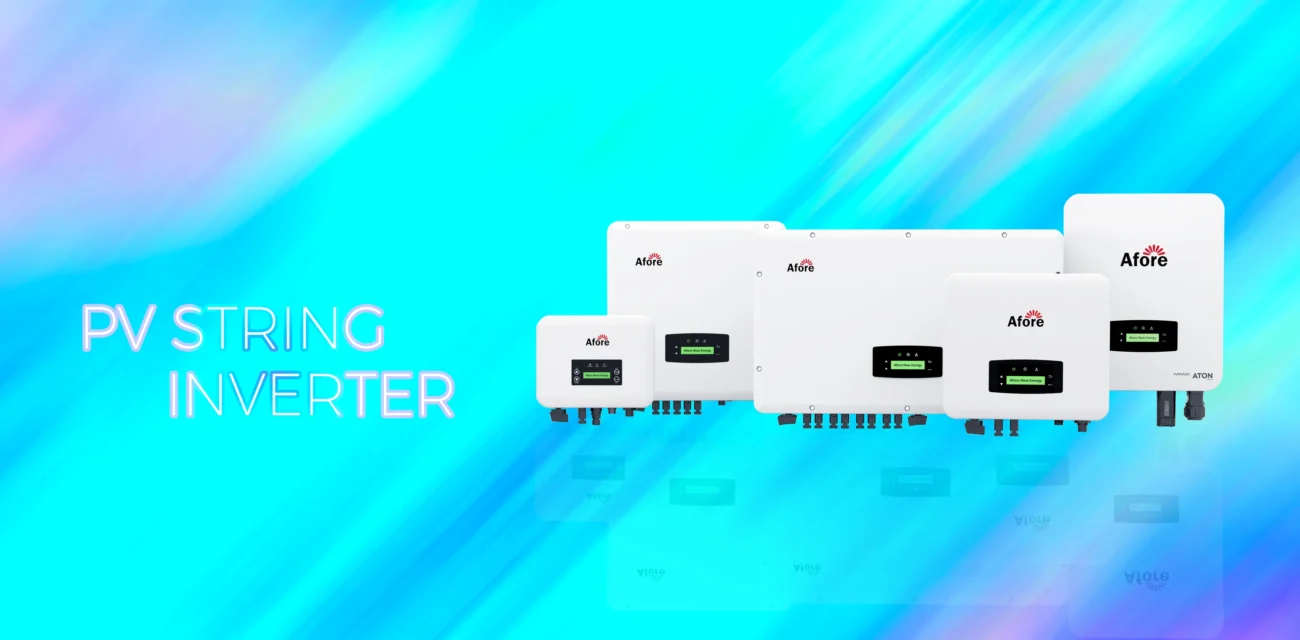
Reicht ein 5000W-Wechselrichter für die Stromversorgung eines Hauses aus?
Der Strombedarf eines typischen Haushalts
Bei der Beurteilung, ob ein 5000-Watt-Wechselrichter für die Stromversorgung Ihres Hauses ausreichend ist, kommt es darauf an, welche Geräte und Systeme Sie betreiben wollen. Ein modernes Haus verbraucht in der Regel zwischen 5000 und 8000 Watt bei Spitzenlast. Mit etwas strategischer Planung kann ein 5000-Watt-Wechselrichter jedoch durchaus Ihren grundlegenden Bedarf decken.
Wenn Sie energieeffiziente Geräte betreiben und nur das Nötigste wie Kühlschrank, Beleuchtung, Ventilatoren, WLAN, Fernseher und vielleicht eine Mikrowelle mit Strom versorgen, dann ist ein 5000-W-Solarwechselrichter mehr als ausreichend. Der Schlüssel liegt darin, die Last zu verwalten, die Nutzung der Geräte zu staffeln und schwere Geräte wie Elektroherde oder zentrale Klimaanlagen zu vermeiden, es sei denn, Sie haben ein Modell mit hoher Überspannungsfestigkeit.
Management von Erwartungen und Lastprioritäten
Um das Beste aus einem Solar- und Wechselrichtersystem herauszuholen, ist es hilfreich, die kritischen Verbraucher zu priorisieren. Dies ist besonders wichtig für diejenigen, die einen 5000-Watt-Auto-Wechselrichter in einer mobilen Einrichtung oder einem Wohnmobil verwenden. Geräte wie Wasserpumpen, Waschmaschinen oder Raumheizungen benötigen eine hohe Wattzahl, so dass sie möglicherweise zyklisch betrieben oder ausgeschlossen werden müssen.
Sie können Ihren Bedarf mit einem Lastrechner oder einem Energieaudit berechnen, indem Sie die Wattzahl jedes Geräts auflisten und diese addieren. Wenn Ihr Gesamtbedarf 5000 W übersteigt, müssen Sie entweder auf einen größeren Wechselrichter umsteigen oder die Geräte selektiv mit Strom versorgen.
Wie viele Batterien benötigen Sie für einen 5000W-Wechselrichter?
Verständnis der Batteriekapazität und des Leistungsbedarfs
Um festzustellen, wie viele Batterien Sie für einen 5000-Watt-Wechselrichter benötigen, müssen Sie zunächst überlegen, wie lange Sie Ihr System betreiben wollen und welche Art von Batterien Sie verwenden. Die beiden gängigsten Batterietypen sind Lithium-Ionen- und Blei-Säure-Batterien, die jeweils unterschiedliche Leistungsmerkmale aufweisen.
Die Batteriekapazität wird in Amperestunden (Ah) gemessen und gibt in Verbindung mit der Spannung (normalerweise 12 V, 24 V oder 48 V) an, wie viel Energie Sie speichern können. Eine 12-V-Batterie mit 100 Ah speichert zum Beispiel 1.200 Wattstunden (Wh) Energie. Da ein 5000-Watt-Wechselrichter unter Volllast 5.000 Watt pro Stunde verbraucht, wäre diese Batterie in weniger als 15 Minuten leer, wenn man die Effizienzverluste des Wechselrichters nicht berücksichtigt.
Allgemeine Schätzungen der Batteriebank für 5000W-Wechselrichter
Von wie vielen Batterien sprechen wir also?
- Für den kurzfristigen Gebrauch (1 Stunde):
- Mit einem 48V-System: 4 x 100Ah Lithium-Batterien
- Mit einem 24V-System: 8 x 100Ah Lithium-Batterien
- Bei einem 12V-System: 16 x 100Ah Lithium-Batterien (nicht ideal wegen der hohen Stromaufnahme)
- Bei längerem Gebrauch (4-6 Stunden):
- 8 bis 16 Lithiumbatterien je nach Systemspannung und Lastprofil
Diese Zahlen können je nach Ihrem tatsächlichen Energiebedarf variieren, aber sie geben einen groben Anhaltspunkt. Wenn Sie eine gemischte Last betreiben (z. B. Kühlschrank, Beleuchtung, Ventilatoren), verbrauchen Sie vielleicht eher 2000-3000 W pro Stunde, was längere Laufzeiten mit der gleichen Batteriebank ermöglicht.
Berechnung der Anzahl der Lithiumbatterien zur Versorgung eines 5kW-Wechselrichters
Wenn Sie Lithiumbatterien verwenden, die effizienter und langlebiger sind, können Sie hier die Anzahl der Lithiumbatterien für einen 5-kW-Wechselrichter berechnen:
- Ermitteln Sie Ihren täglichen Stromverbrauch. Nehmen wir an, Sie verbrauchen 10kWh pro Tag.
- Wählen Sie Ihre Systemspannung. Ein 48-Volt-System ist ideal für die Effizienz.
- Verwenden Sie die Formel:
- Erforderliche Batteriekapazität (Ah) = Gesamtenergie (Wh) / Systemspannung (V)
- Also, 10.000 Wh / 48V = 208,33Ah
- Dividieren Sie durch die Batteriegröße. Wenn Sie 100-Ah-Batterien verwenden, benötigen Sie mindestens 3 (aus Gründen der Sicherheit und der Entladetiefe werden jedoch 4+ empfohlen).
Diese Logik gilt auch für die Anzahl der Lithiumbatterien zur Versorgung eines 5-kW-110-V-Wechselrichters, wobei jedoch die Stromaufnahme besonders zu beachten ist. Systeme mit niedrigerer Spannung (z. B. 110 V) verbrauchen mehr Strom und erfordern dickere Kabel und mehr Batterien, um die Effizienzverluste auszugleichen.
Deep-Cycle-Batterien vs. normale Batterien
Für jede Solarwechselrichter- oder Wechselrichter-PV-Solaranwendung ist die Verwendung von Deep-Cycle-Batterien ein Muss. Diese sind für wiederholte Entladezyklen ausgelegt und können die hohe Stromaufnahme eines 5000-Watt-Wechselrichters viel besser bewältigen als Standard-Autobatterien. Egal, ob es sich um ein Heim-Backup, ein Wohnmobil oder eine netzunabhängige Hütte handelt, die Kombination Ihres Wechselrichters mit einer robusten Deep-Cycle-Lithium-Batteriebank ist der Schlüssel zu Leistung und Langlebigkeit.
Zusätzliche Tipps zur Dimensionierung Ihrer Batteriebank
- Überdimensionieren Sie Ihre Batteriebank immer um mindestens 20%, um Ineffizienzen des Wechselrichters und unerwartete Laststeigerungen zu berücksichtigen.
- Verwenden Sie einen Batteriemonitor oder ein Energiemanagementsystem, um den Verbrauch in Echtzeit zu verfolgen.
- Ziehen Sie eine Solarladefunktion in Betracht, um Ihre Batterien tagsüber aufzufüllen.
Ganz gleich, ob Sie einen Solar- und Stromwechselrichter für eine Hütte betreiben oder sich bei einer Autoreise auf einen 5000-Watt-Auto-Wechselrichter verlassen, die richtige Batteriekonfiguration ist unverzichtbar. Sie ist die Grundlage dafür, dass Ihr Wechselrichter seine Aufgabe erfüllen kann.
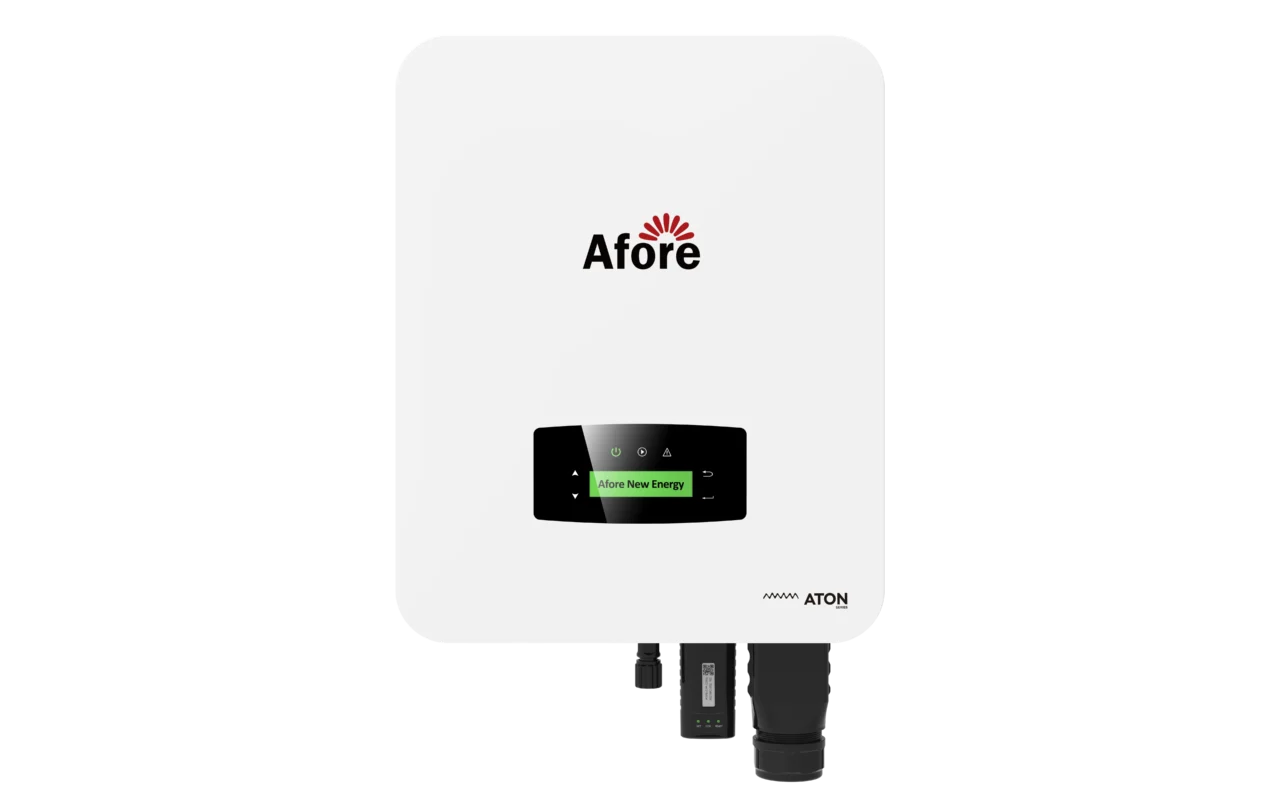
Welche Größe der Solaranlage benötigen Sie für einen 5000W-Wechselrichter?
Anpassung der Solarleistung an die Wechselrichterleistung
Bei der Planung einer Solaranlage mit einem 5000-Watt-Wechselrichter muss sichergestellt werden, dass die Solarmodule genügend Strom liefern können, um die Kapazität des Wechselrichters zu erreichen oder zu übertreffen. Ein 5000-Watt-Wechselrichter kann eine kontinuierliche Leistungsaufnahme von bis zu 5000 Watt bewältigen. Daher möchten Sie natürlich eine Solaranlage, die in der Lage ist, diese Last unter optimalen Bedingungen zu liefern.
Normalerweise haben Solarmodule eine Leistung von 300W bis 450W pro Modul. Um also 5000 W zu erreichen, bräuchten Sie:
- Mit 400W-Paneelen: 13 Paneele (400W x 13 = 5200W)
- Mit 350W-Paneelen: 15 Paneele (350W x 15 = 5250W)
- Mit 300W-Paneelen: 17 Paneele (300W x 17 = 5100W)
Diese Panelkonfiguration stellt sicher, dass Ihr Solarwechselrichter genug Saft hat, um mit voller Kapazität zu arbeiten, auch wenn das Sonnenlicht nicht perfekt ist.
Berücksichtigung der Sonnenstunden und des Wirkungsgrads der Module
Aber es geht nicht nur um die reine Wattzahl. Sie müssen auch die Verfügbarkeit von Sonnenlicht berücksichtigen. Wenn Sie sich in einem Gebiet befinden, das durchschnittlich 5 Sonnenstunden pro Tag hat, würde ein 5000-Watt-System ungefähr erzeugen:
- 5.000W x 5 Stunden = 25kWh pro Tag
Das ist eine solide Energiemenge, die ausreicht, um viele kleine bis mittelgroße Haushalte mit Strom zu versorgen, vor allem, wenn man sie mit effizienten Geräten und einem guten Energiemanagement kombiniert.
Wenn Sie planen, Ihre Wechselrichter-PV-Solaranlage völlig netzunabhängig zu betreiben, muss diese Solarleistung Ihrem täglichen Bedarf entsprechen oder ihn übertreffen. Stellen Sie sicher, dass Sie etwa 20% mehr Solarmodulkapazität hinzufügen, um bewölkte Tage, Systemverluste und saisonale Schwankungen abzudecken.
Konfiguration der Solarsystemspannung
Ein Solar- und Leistungswechselrichter wie ein 5000-W-Modell funktioniert in der Regel am besten mit Systemen mit höherer Spannung (48 V), da er den Strom reduziert und den Gesamtwirkungsgrad verbessert. Auch die Anordnung Ihrer Solarmodule sollte zu dieser Konfiguration passen. Zum Beispiel:
- String-Konfiguration: Schalten Sie die Paneele in Reihe, um die erforderliche Eingangsspannung zu erreichen.
- MPPT-Steuerung: Verwenden Sie einen Maximum Power Point Tracking-Laderegler, um die Energiegewinnung zu optimieren.
Die meisten modernen Solarwechselrichtersysteme verfügen über eine MPPT-Funktion, doch sollten Sie sich stets von der Kompatibilität überzeugen.
Was ist mit hybriden Aufstellungen?
Wenn Sie planen, sowohl Netzstrom als auch Solarstrom zu nutzen (ein Hybridsystem), kann die Dimensionierung Ihrer Paneele etwas geringer sein als die Abdeckung der vollen Last. Zum Beispiel ist ein 80% Solar-Offset üblich, was bedeutet, dass Ihre Module nur 4000W erzeugen müssen, um das Netz zu ergänzen und Ihre Stromrechnung zu senken.
Überlegungen zur Dachfläche und Installation
Die Platzierung der Module ist genauso wichtig wie die Anzahl der Module. Je nach Wattleistung und Effizienz der Paneele benötigen Sie etwa 300 bis 500 Quadratmeter Dachfläche. Nach Süden ausgerichtete, unbeschattete Dächer sind ideal, aber auch Ost-/Westausrichtungen können mit geringerer Leistung funktionieren.
Vergewissern Sie sich, dass Ihr Installateur die örtlichen Neigungswinkel, das Montagematerial, die Windbelastung und die Abstände zwischen den Modulen berücksichtigt, um Abschattungen zu vermeiden.
Alles zusammenbinden
Um einen 5000-Watt-Wechselrichter zu unterstützen, sollte Ihr Solarsystem idealerweise eine Leistung zwischen 5000 und 6000 Watt haben, je nach Nutzung, Batteriespeicher und lokalem Klima. Wenn Sie eine mobile Anlage bauen, z. B. einen 5000-Watt-Auto-Wechselrichter, müssen Sie das System wahrscheinlich verkleinern und der energieeffizienten Nutzung und der Batteriespeicherung Vorrang einräumen.
Mit der richtigen Kombination aus Solarmodulen, Batterien und einem richtig abgestimmten Wechselrichter kann Ihr PV-Solarsystem über Jahre hinweg zuverlässige und nachhaltige Energie liefern. Lassen Sie sich von einem Solarexperten wie Afore beraten, um ein System für Ihren speziellen Lebensstil und Standort zu entwickeln.
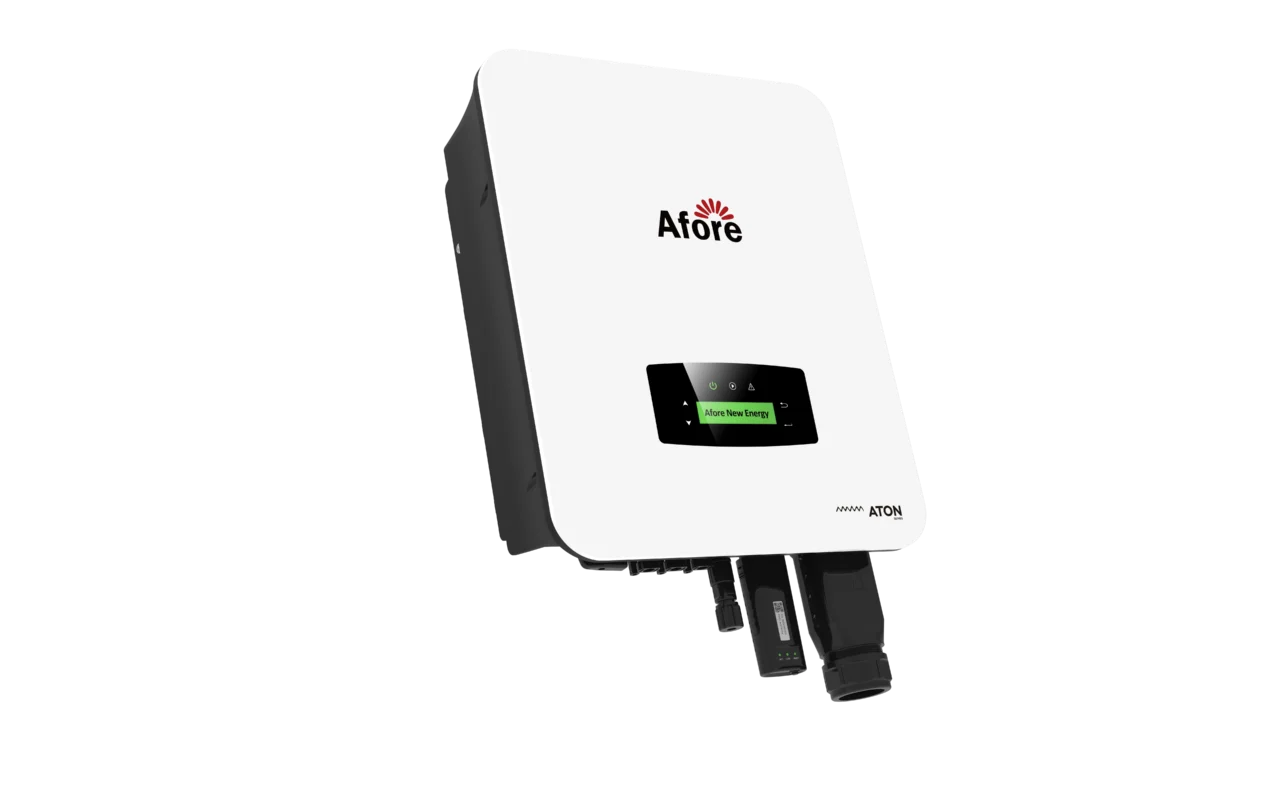
Kann ein 5000-W-Inverter Geräte mit hohem Energieverbrauch versorgen?
Schwere Lasten und Stromstöße
Ja, aber mit Einschränkungen. Während ein 5000-Watt-Wechselrichter technisch in der Lage ist, Hochleistungsgeräte wie eine Mikrowelle oder eine Waschmaschine mit Strom zu versorgen, könnte er mit hohen Stoßbelastungen wie denen eines Luftkompressors oder einer HLK-Anlage Probleme haben.
Smart Appliance Management
Wenn Sie planen, mehrere Geräte mit hoher Last zu betreiben, sollten Sie deren Nutzung staffeln oder Ihren Wechselrichter aufrüsten. So kann beispielsweise die Kombination eines Solar- und Wechselrichtersystems mit einer Batteriebank die Belastung verringern und den Lastausgleich verbessern.
Sollten Sie einen 5kW oder 8kW Wechselrichter wählen?
Größer ist nicht immer besser
Der Sprung von 5000 W auf 8000 W ist mit zusätzlichen Kosten, Gewicht und Installationsaufwand verbunden. Für die meisten Privatanwender und Wohnmobilisten ist ein 5000-W-Wechselrichter eine ausgewogene Lösung, die nicht zu viel verlangt.
Wann sollte ein Upgrade erfolgen?
Wenn Sie ein größeres Haus haben oder planen, mehrere Klimaanlagen oder Elektrowerkzeuge gleichzeitig zu betreiben, kann es sinnvoll sein, auf ein 8-kW-Modell umzusteigen.
Wie lange läuft ein 5000W Wechselrichter?
Alles hängt von Ihrer Stromquelle ab
Die Frage, wie lange ein 5000-Watt-Wechselrichter laufen kann, hängt ganz davon ab, woran er angeschlossen ist. Wird er von einer Batteriebank, einer Solar-Wechselrichteranlage oder sogar einem Generator gespeist? Die Betriebsdauer hängt direkt von der Kapazität Ihrer Energiequelle und der Größe Ihrer Last ab.
Nehmen wir an, Sie betreiben den Wechselrichter mit Batterien. In diesem Fall hängt die Lebensdauer davon ab, wie lange er hält:
- Die Gesamtkapazität der Batterie (in Wattstunden oder Kilowattstunden)
- Die Dauerbelastung (wie viel Watt Sie verbrauchen)
- Der Wirkungsgrad des Wechselrichters (in der Regel etwa 85-95%)
Ein kurzes Beispiel mit Batterien
Wenn Sie eine 48V-Batteriebank mit 400Ah Kapazität haben:
- 48V x 400Ah = 19.200 Wattstunden (oder 19,2 kWh)
Nun, wenn Ihr 5000-Watt-Wechselrichter mit voller Leistung läuft:
- 19.200 Wh ÷ 5000W = etwa 3,84 Stunden (unter idealen Bedingungen)
Das bedeutet, dass Ihr System theoretisch fast 4 Stunden lang unter Volllast laufen könnte. Die reale Nutzung ist jedoch nachsichtiger. Die meisten Systeme laufen nicht 100% der Zeit mit voller Kapazität. Wenn Ihre durchschnittliche Last also eher bei 2500W liegt, verdoppelt sich Ihre Laufzeit auf 7-8 Stunden.
Laufzeit des solarbetriebenen Wechselrichters
Wenn Sie einen Solar- und Stromwechselrichter in Kombination mit Solarmodulen verwenden, verlängert sich die Laufzeit auf unbestimmte Zeit - solange die Sonne scheint und Ihre Batterien geladen bleiben. In einem Wechselrichter-PV-Solarsystem kann der Wechselrichter während der Tageslichtstunden ununterbrochen laufen und gleichzeitig Ihre Batteriebank aufladen.
Also technisch gesehen, mit der richtigen Einstellung:
- Tagsüber: Unbegrenzte Laufzeit, da Sonnenkollektoren Energie liefern
- Nachts: Abhängig vom Batteriespeicher
Dies macht Solarsysteme in Verbindung mit 5000-Watt-Wechselrichtern zu einer idealen Wahl für netzunabhängige Hütten, Wohnmobile oder Häuser in Gebieten mit häufigen Stromausfällen.
Backup-Generator + Wechselrichter-Szenario
Sie können Ihren 5000-Watt-Wechselrichter auch mit einem Notstromgenerator betreiben. In diesem Fall fungiert der Wechselrichter als Stromaufbereiter und schaltet zwischen Generator- und Batteriestrom um. Ihre Laufzeit richtet sich dann nach der Verfügbarkeit von Kraftstoff und der Generatorleistung.
Kann ein 5000-Watt-Auto-Inverter lange laufen?
Wenn Sie einen 5000-Watt-Auto-Wechselrichter verwenden, sind die Lichtmaschine und die Batteriekapazität Ihres Fahrzeugs die begrenzenden Faktoren. Diese Geräte eignen sich eher für den kurzzeitigen Einsatz hoher Leistung, z. B. für den Betrieb von Elektrowerkzeugen auf einer abgelegenen Baustelle. Wenn Sie nicht über ein sekundäres Batteriesystem oder eine aufgerüstete Lichtmaschine verfügen, ist ein langfristiger Einsatz bei voller Leistung nicht zu empfehlen.
Zusammenfassung: Laufzeit hängt von Last und Stromquelle ab
Zum Abschluss noch eine Tabelle mit Kurzinformationen:
| Stromquelle | Last (Watt) | Batteriekapazität (Wh) | Geschätzte Laufzeit |
| 48V 400Ah Batteriebank | 5000W | 19.200 Wh | ~3,8 Stunden |
| 48V 400Ah Batteriebank | 2500W | 19.200 Wh | ~7,6 Stunden |
| Sonnensystem (tagsüber) | 2500-5000W | Kontinuierlich mit Sonne | Unbegrenzt |
| Generator-Backup | 5000W | Kraftstoffabhängig | So lange wie nötig |
Ganz gleich, ob Sie ein mobiles System mit einem 5000-Watt-Auto-Wechselrichter aufbauen oder Ihr Haus mit einem Solar-Wechselrichter versorgen, die Langlebigkeit Ihres Systems hängt ganz davon ab, wie Sie Ihren Energiespeicher dimensionieren und verwalten. Planen Sie Ihr System immer unter Berücksichtigung des Lastprofils und der Reservekapazität, um das Beste aus Ihrem Wechselrichter herauszuholen.
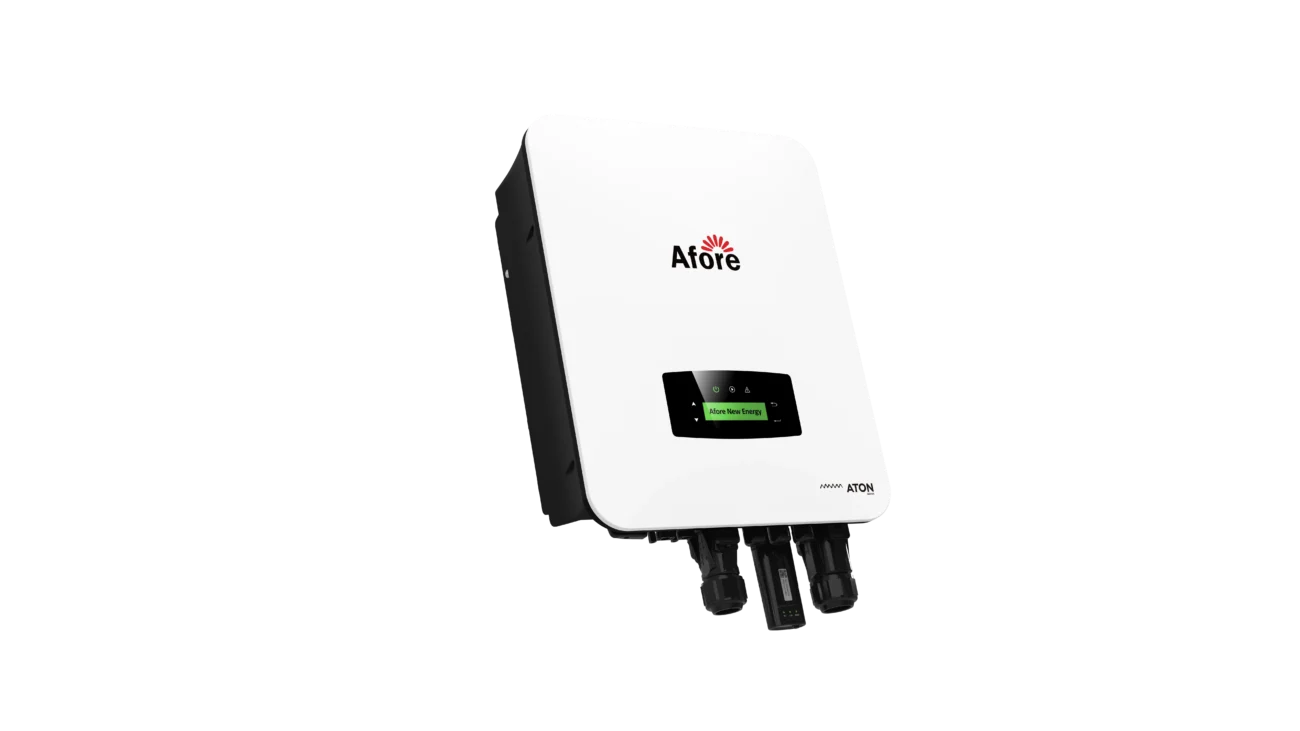
Installationstipps und Sicherheitsrichtlinien
Wählen Sie den richtigen Standort
Die richtige Platzierung Ihres 5000-W-Wechselrichters ist sowohl für die Leistung als auch für die Sicherheit entscheidend. Installieren Sie den Wechselrichter immer in einem sauberen, trockenen und gut belüfteten Bereich, fern von brennbaren Materialien und Feuchtigkeit. Berücksichtigen Sie bei der Aufstellung eines 5000-Watt-Wechselrichters den Platzbedarf für die Lüfter und die Wärmeableitung.
Vermeiden Sie beengte oder abgedichtete Räume, insbesondere in Wohnmobilen oder engen Technikräumen. Ein Wärmestau kann den Wirkungsgrad des Wechselrichters verringern oder im Laufe der Zeit sogar zum Ausfall des Systems führen.
Befestigen Sie den Wechselrichter
Egal, ob Ihr 5000-Watt-Auto-Wechselrichter an einer Wand, einem Brett oder in einem Fahrzeug montiert wird, stellen Sie sicher, dass der Wechselrichter mit den vom Hersteller empfohlenen Halterungen und Schrauben sicher befestigt ist. Bewegungen während des Betriebs oder der Fahrt können interne Komponenten beschädigen.
Richtige Verkabelung und Steckverbinder verwenden
Die Verwendung unterdimensionierter Kabel ist einer der häufigsten Fehler bei der Installation von Wechselrichtern. Ein 5000-Watt-Wechselrichter zieht einen beträchtlichen Strom, vor allem bei 12- oder 24-Volt-Systemen. Daher müssen Sie dicke Kabel verwenden, um Spannungsabfälle und Überhitzung zu vermeiden.
- Verwenden Sie Kupferlitze für mehr Flexibilität
- Wählen Sie den Kabelquerschnitt entsprechend der Spannung Ihres Wechselrichters (z. B. 4 AWG oder dicker für 12-V-Systeme).
- Stellen Sie sicher, dass alle Anschlüsse dicht, sauber und korrosionsfrei sind.
Installieren Sie die richtige Sicherung oder den richtigen Unterbrecher
Schützen Sie Ihre Investition mit geeigneten Sicherungen oder Schutzschaltern. Diese dienen als erste Verteidigungslinie gegen Überlastungen und Kurzschlüsse. Installieren Sie bei einem Solar- und Wechselrichtersystem eine DC-Sicherung zwischen der Batteriebank und dem Wechselrichter und AC-Unterbrecher auf der Ausgangsseite.
Betreiben Sie Ihre Wechselrichter-Solaranlage niemals ohne diese Schutzvorrichtungen.
Platzierung und Sicherheit der Batterien
Wenn es um die Anzahl der Lithiumbatterien geht, die einen 5-kW-Wechselrichter versorgen sollen, arbeitet man oft mit Systemen mit hohem Energieverbrauch. Bringen Sie die Batterien in einem belüfteten Gehäuse unter, um einen Wärmestau zu vermeiden, und beachten Sie die Empfehlungen des Herstellers für die Abstände und die Isolierung. Für eine effiziente Integration von Energiespeichern sollten Sie Afore's Energiespeicher-Wechselrichterdie eine hohe Kompatibilität mit verschiedenen Batterietypen und intelligente Verwaltungsfunktionen bieten.
- Verwenden Sie gleich lange Batterieverbindungskabel für eine gleichmäßige Ladung
- Installation eines Batteriemanagementsystems (BMS) mit Lithiumbatterien
- Vermeiden Sie Überladung durch Verwendung eines kompatiblen Solarwechselrichters mit MPPT-Laderegelung
Erdung und Verklebung
Die Erdung ist entscheidend für die Sicherheit und die Stabilität des Systems. Ihr 5000-Watt-Wechselrichter sollte über einen speziellen Erdungsstab oder das Erdungssystem Ihres Gebäudes geerdet werden. Dadurch wird das Risiko eines Stromschlags verringert und der Überspannungsschutz verbessert.
Wenn Sie einen 5000-Watt-Auto-Wechselrichter verwenden, erden Sie das System mit dem Fahrzeugchassis und überprüfen Sie den sicheren Kontakt.
Erfüllen Sie die örtlichen Elektrovorschriften
Beim Anschluss Ihres Wechselrichters an das Stromnetz müssen Sie die örtlichen Elektrovorschriften und -bestimmungen einhalten. Dies bedeutet oft, dass Sie einen zugelassenen Elektriker beauftragen müssen, der die endgültigen Anschlüsse prüft oder durchführt, insbesondere wenn Ihr System in das Stromnetz eingespeist wird.
Regelmäßige Wartung und Überwachung
Auch die besten Solar- und Wechselrichteranlagen müssen regelmäßig überprüft werden. Machen Sie sich das zur Gewohnheit:
- Überprüfen Sie alle Kabelverbindungen auf Lockerheit oder Korrosion
- Reinigen Sie die Belüftungsöffnungen oder Filter des Wechselrichters, um eine Überhitzung zu vermeiden.
- Überwachen Sie die Systemausgabe über ein eingebautes Display oder einen externen Monitor
Software-Apps, die mit vielen modernen Solarwechselrichtersystemen erhältlich sind, können Sie auf Probleme aufmerksam machen, bevor sie zu ernsthaften Problemen werden.
Not-Aus-Schalter zugänglich halten
Installieren Sie einen Not-Aus-Schalter in der Nähe des Wechselrichters, insbesondere in Wohngebieten oder Umgebungen mit hoher Nutzung. Dies ist von entscheidender Bedeutung, wenn die Stromversorgung im Falle eines Brandes, einer Überschwemmung oder einer Fehlfunktion schnell unterbrochen werden muss.
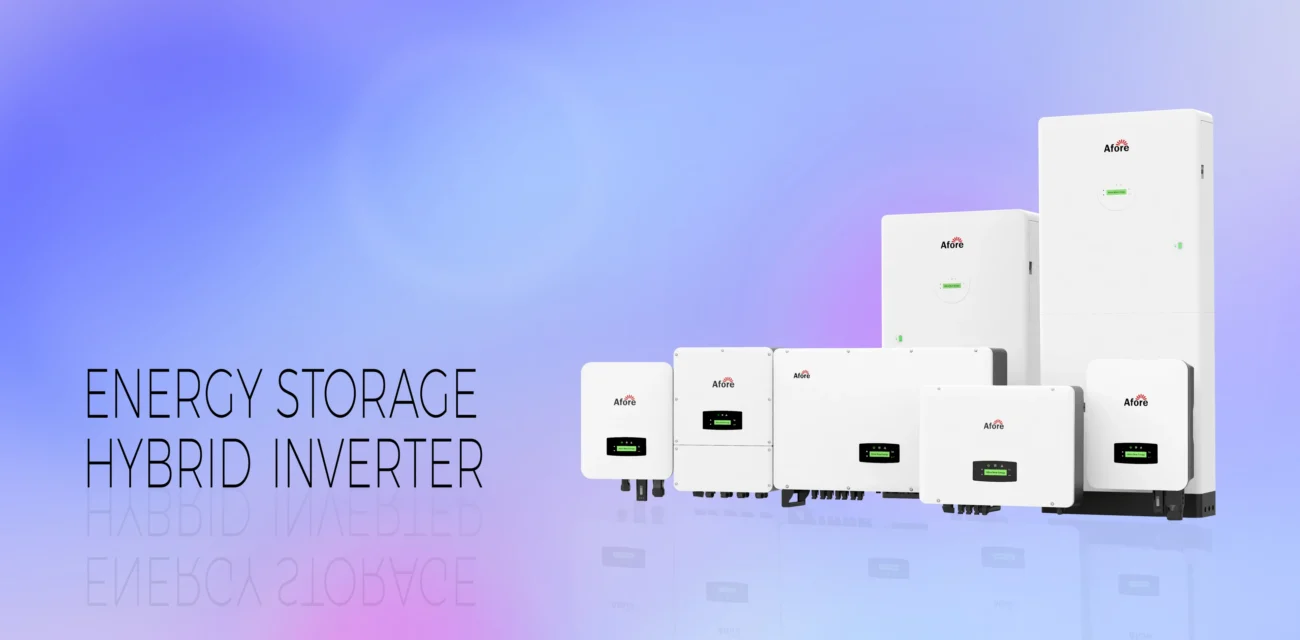
Schlussfolgerung
Ein 5000-W-Wechselrichter bietet ein perfektes Gleichgewicht zwischen Leistung und Erschwinglichkeit. Ganz gleich, ob Sie eine Notstromversorgung aufbauen, netzunabhängig leben oder Ihren Transporter in ein Wohnmobil umwandeln wollen - er ist eine zuverlässige Wahl, die Flexibilität, Leistung und Seelenfrieden bietet.
In Kombination mit einer richtig dimensionierten Batteriebank und einer Solaranlage wird ein 5000-Watt-Wechselrichter zum Rückgrat Ihrer Energieunabhängigkeit. Denken Sie nur daran, Ihren Energiebedarf zu berechnen, die Komponenten klug zu wählen und der Sicherheit stets den Vorrang zu geben.
Wenn Sie noch unsicher sind, ob Sie sich für einen 5-kW-Wechselrichter oder ein 8-kW-Modell entscheiden sollen, fragen Sie sich: Wie viel Leistung brauche ich wirklich? Für die meisten ist der 5000-Watt-Wechselrichter mehr als ausreichend.
FAQs
Was kann ich mit einem 5000-Watt-Wechselrichter betreiben?
Ein 5000-Watt-Wechselrichter kann die meisten Haushaltsgeräte wie Kühlschränke, Mikrowellen, Waschmaschinen, Fernsehgeräte, Lampen und sogar kleine Klimaanlagen mit Strom versorgen. Er eignet sich auch perfekt für den gleichzeitigen Betrieb mehrerer Werkzeuge oder Geräte, egal ob Sie zu Hause oder unterwegs sind - mit einem 5000-Watt-Auto-Wechselrichter.
Wie viele Lithiumbatterien benötige ich, um einen 5-kW-Wechselrichter zu versorgen?
Dies hängt von der Batteriespannung und -kapazität ab. Wenn Sie z. B. Lithiumbatterien mit 48 V und 100 Ah verwenden, benötigen Sie mindestens 4 Batterien, um Ihren 5000-W-Wechselrichter einige Stunden lang mit Strom zu versorgen. Für eine längere Nutzung, insbesondere in einer Wechselrichter-PV-Solaranlage, benötigen Sie möglicherweise 6 bis 8 Batterien.
Kann ein 5000-Watt-Wechselrichter ein ganzes Haus versorgen?
Das hängt vom Gesamtenergiebedarf des Hauses ab. Ein 5000-Watt-Wechselrichter kann einen einfachen Haushalt mit energieeffizienten Geräten versorgen. Wenn Ihr Haus jedoch über eine zentrale Klimaanlage oder andere Geräte mit hohem Energiebedarf verfügt, benötigen Sie möglicherweise einen größeren Wechselrichter oder ein Lastmanagementsystem.
Unterscheidet sich ein Solarwechselrichter von einem normalen Wechselrichter?
Ja. Ein Solarwechselrichter ist speziell für die Umwandlung von Gleichstrom aus Solarmodulen in nutzbaren Wechselstrom ausgelegt. Er verfügt oft über Funktionen wie MPPT-Tracking und die Integration von Solar- und Wechselrichtersystemen für Energieeffizienz und Batterieladung. Afore's Hybrid-Solarwechselrichter bieten ein effizientes Energiemanagement und USV-Funktionen.
Wie dimensioniere ich meine Solaranlage für einen 5000-Watt-Wechselrichter?
Für einen 5000-Watt-Wechselrichter bräuchten Sie idealerweise eine Solaranlage mit einer Leistung von 5 bis 7 kW, wobei Wirkungsgradverluste zu berücksichtigen sind. Das könnte etwa 15-20 Solarmodule bedeuten, je nach Wattleistung pro Modul und Sonneneinstrahlung. Afore bietet eine Reihe von einphasige Wechselrichter geeignet für PV-Anlagen in Wohngebäuden, die sich gut mit solchen Solaranlagen kombinieren lassen.
Kann ich einen 5000-Watt-Wechselrichter in meinem Fahrzeug verwenden?
Ja, aber dazu ist eine sehr leistungsstarke Lichtmaschine oder eine separate Batteriebank erforderlich. Ein 5000-Watt-Auto-Wechselrichter ist ideal für mobile Arbeitsplätze oder Wohnmobile, aber nicht alle Fahrzeuge können die benötigte Leistung von Haus aus liefern.
Welche Sicherheitsmaßnahmen sollte ich bei der Installation eines Wechselrichters treffen?
Sorgen Sie für ausreichende Belüftung, verwenden Sie die richtige Kabelstärke, installieren Sie Sicherungen und Unterbrecher und erden Sie den Wechselrichter richtig. Diese Schritte gelten sowohl für die Installation eines Solarwechselrichters als auch für die eines eigenständigen Wechselrichters.
Wie hoch ist die Lebensdauer eines 5000-Watt-Wechselrichters?
Bei ordnungsgemäßer Wartung und hochwertigen Komponenten kann ein 5000-W-Wechselrichter 5-15 Jahre halten. Die Lebensdauer eines Wechselrichters hängt auch von der Nutzung, der Temperatur und den Lastzyklen ab.
Kann ich meinen Wechselrichter an das Stromnetz anschließen?
Ja, wenn Sie einen netzgekoppelten Solarwechselrichter verwenden. Diese sind so konzipiert, dass sie sich mit dem Stromnetz synchronisieren und es Ihnen sogar ermöglichen, überschüssigen Strom an Ihr Versorgungsunternehmen zu verkaufen. Befolgen Sie immer die örtlichen Vorschriften und lassen Sie sich von einem Fachmann beraten.
Warum schaltet sich mein Wechselrichter automatisch ab?
Dies kann auf eine niedrige Batteriespannung, Überlastung, Überhitzung oder interne Fehler zurückzuführen sein. Moderne 5000-Watt-Wechselrichter verfügen über integrierte Schutzfunktionen, die das System abschalten, um Schäden zu vermeiden.




